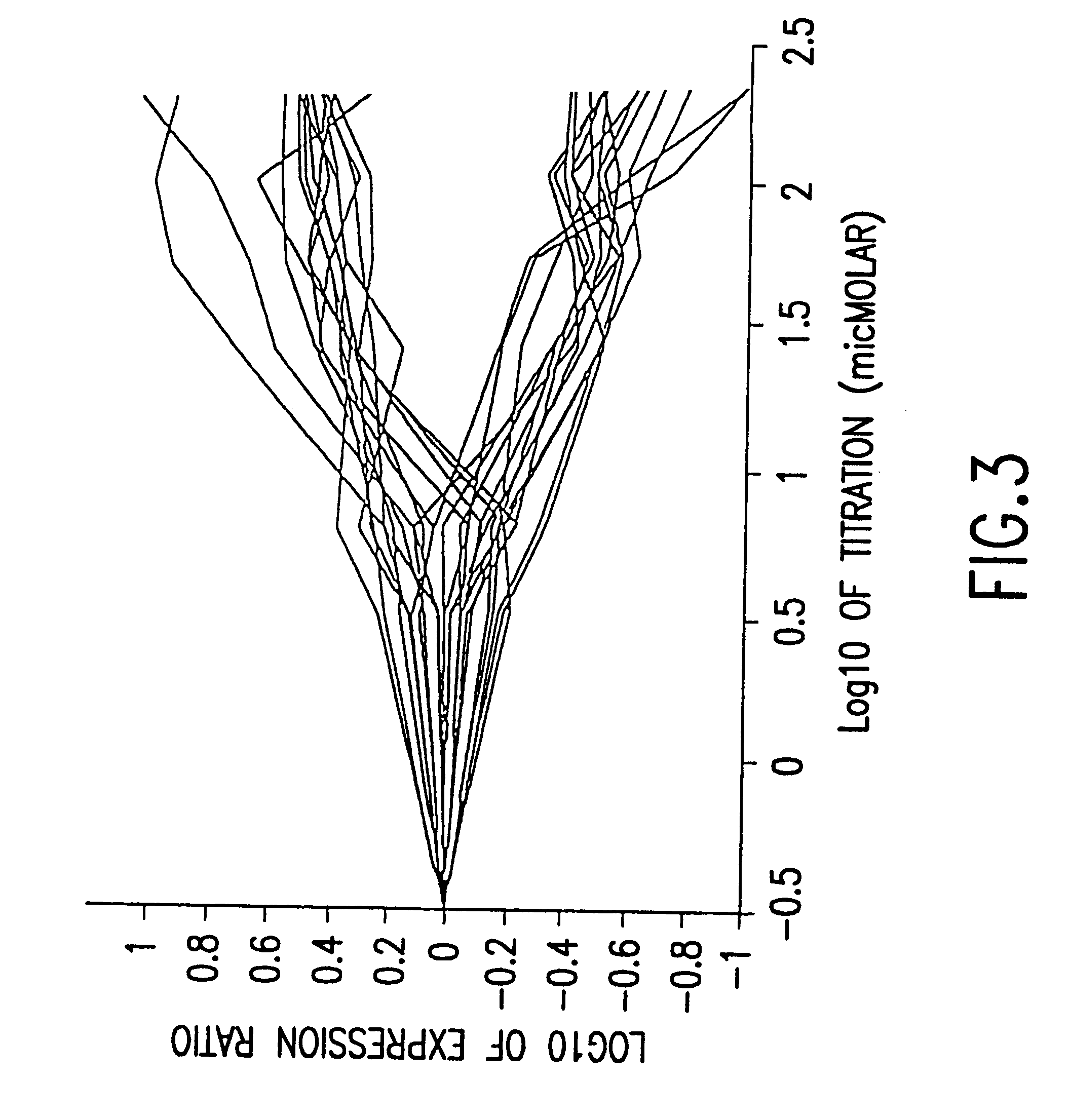Methods for determining therapeutic index from gene expression profiles
a gene expression and therapeutic index technology, applied in the direction of synthetic polymer active ingredients, chemical property prediction, instruments, etc., can solve the problems of non-specific action on off-target pathways, and achieve the effects of low therapeutic index, low therapeutic index, and high therapeutic effect with tolerable side effects
- Summary
- Abstract
- Description
- Claims
- Application Information
AI Technical Summary
Benefits of technology
Problems solved by technology
Method used
Image
Examples
example 1 (section 6 , infra) illustrates the one such embodiment.in this example , the expression of a number of genes are monitored as a wild type yeast culture is subjected to a graded levels of the drug fk506 (fig.8a).similar experiments are repeated with a yeast culture whose cna1 and cna2 genes are deleted (fig.8b)
Example 1 (Section 6, infra) illustrates the one such embodiment. In this example, the expression of a number of genes are monitored as a wild type yeast culture is subjected to a graded levels of the drug FK506 (FIG. 8A). Similar experiments are repeated with a yeast culture whose CNA1 and CNA2 genes are deleted (FIG. 8B). CNAl and CNA2 are two components of the calcineurin multi-protein complex. Because the drug FK506 acts upon the calcineurin protein to exert its activity on the calcineurin pathway. Deletion of CNA1 and CNA2 eliminates the primary target pathway for FK506. For a discussion of the yeast model system, see, Cardens et al., 1994, "Yeast as Model T Cells, Prosp. In DRUG DICOVER. DESIGN, 2:103-126.
FIG. 8A shows that the expression of the most of the genes affected via the primary target, the calcineurin pathway (those genes that do not respond in the absence of the calcineurin pathway), reaches two fold induction or repression at the concentration of 0.2 .mu.g / ml. The ...
PUM
| Property | Measurement | Unit |
|---|---|---|
| concentration | aaaaa | aaaaa |
| concentration | aaaaa | aaaaa |
| pH | aaaaa | aaaaa |
Abstract
Description
Claims
Application Information
 Login to View More
Login to View More - R&D
- Intellectual Property
- Life Sciences
- Materials
- Tech Scout
- Unparalleled Data Quality
- Higher Quality Content
- 60% Fewer Hallucinations
Browse by: Latest US Patents, China's latest patents, Technical Efficacy Thesaurus, Application Domain, Technology Topic, Popular Technical Reports.
© 2025 PatSnap. All rights reserved.Legal|Privacy policy|Modern Slavery Act Transparency Statement|Sitemap|About US| Contact US: help@patsnap.com



